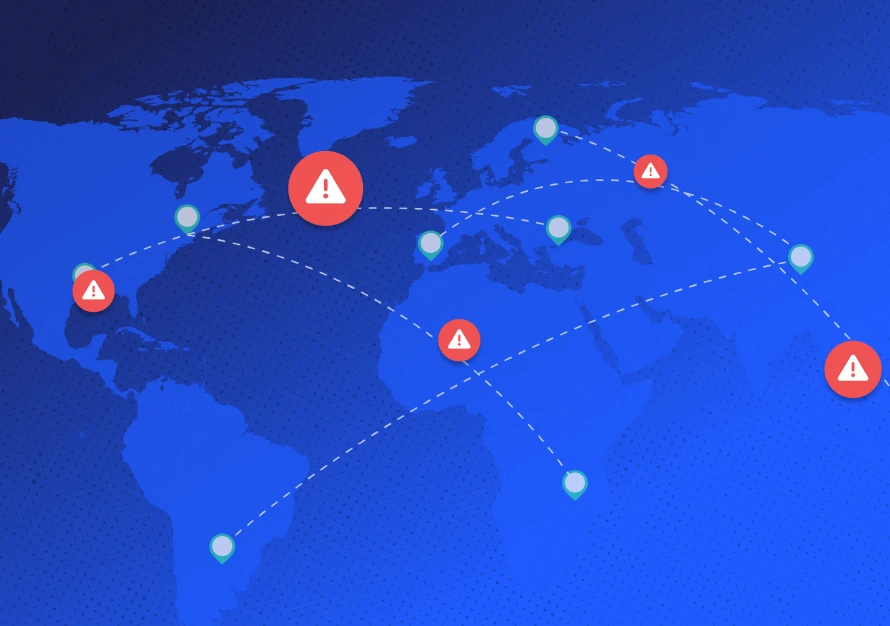Key Takeaways:
- The Compliance Journey: How Progress at Any Level Impacts Safety KPIs
- Why Full Compliance Matters — and How Early Engagement Still Pays Off
- Compliance Wins — But Engagement Moves the Needle
- The 3 Stages of Compliance: How Engagement Impacts Safety KPIs

Introduction
Major workplace tragedies like the 1911 Triangle Shirtwaist Fire and the 1947 Texas City Disaster, which resulted in over 650 fatalities, forced a nationwide rethink of workplace safety. These events led to sweeping changes in how we protect an ever-growing workforce and set the stage for significant regulatory reforms that helped lower U.S. workplace fatalities — from 14,500 in 1933 to 5,283 in 2023.

The establishment of the United States Occupational Safety and Health Administration (OSHA) in 1971 marked a major turning point by setting clear, enforceable standards for training, protective equipment, and injury reporting. Total Recordable Incident Rates (TRIR) dropped from 11 per 100 workers in 1973 to 2.4 in 2023. Similarly, Days Away from Work (DAFW) fell from 3.2 in 1975 to just 0.9 in 2023.
The numbers clearly demonstrate how prequalification and regulatory compliance are critical to enhancing safety KPIs and protecting workers. While organizations always aim to achieve full compliance with safety standards, getting there is rarely immediate. It’s a process that begins with foundational steps that help suppliers build the structure, awareness, and accountability needed to advance. In this blog, we’ll explore the compliance journey and show how supplier actions at every stage — from initial participation to full alignment — help drive safer outcomes.
Compliance, The Gold Standard in Safety Performance
Achieving compliance with client requirements produces the most significant improvements in safety performance and often coincides with strong safety maturity. Unlike initial prequalification procedures, compliance represents an enduring operational shift. This enables suppliers to internalize best practices and embed risk management and incident prevention into their daily operations.
As these improved practices evolve from required actions into normalized routines, safety becomes second nature, influencing behavior across the organization, from worker habits to executive decision-making and safety maturity.
Avetta’s customer network data, national data from the Bureau of Labor Statistics (BLS), and survey data conducted by the American Society of Safety Professionals (ASSP) show that compliant suppliers within the Avetta network achieve significant gains compared to their non‑compliant peers, including:

Compliance also delivers substantial financial benefits. For a company with 500 employees working 1 million hours per year, improving DART from 1.25 to 0.55 could save $120,000 per year. Meanwhile, reducing LWCR from 0.77 to 0.35 could save $80,000 annually. Most importantly, halving the fatality rate significantly reduces the risk of workplace deaths, with an average cost of $1.46 million per incident. It is clear that sustained compliance translates into both human and financial value.
Building Towards Compliance
While compliance delivers the most substantial impact, improvements don’t begin at the finish line. Suppliers who begin engaging with prequalification programs — even before reaching full compliance — can still achieve measurable gains in safety performance that lead to stronger outcomes over time.
Prequalification Participation
Our data shows that simply participating in prequalification programs — before even completing the process or achieving full compliance — enhances general safety results. The reason for this is that even if participation does not lead to full compliance, such programs serve as an early catalyst, prompting awareness and behavior change that lay the groundwork for managing safety more effectively.
Participation in prequalification programs help suppliers and contractors gain an understanding of:
- Critical safety metrics and compliance standards
- Typical client requirements and industry best practices
- The importance of self-assessment and proactive improvement to develop mature processes
Participation in such programs shows clear and quantifiable impacts within the Avetta network. Compared to national averages, suppliers and contractors engaged in our prequalification programs experienced the following improvements, whether or not they fully completed the process:

These KPI safety improvements result in fewer serious injuries, illnesses, and work disruptions. Even when suppliers fall short of completion, the exposure to structured safety frameworks fosters a foundational understanding of safety and encourages positive behavioral shifts that reduce risk across worksites. It’s clear evidence that participating in prequalification programs doesn’t just check regulatory boxes but actively improves on-the-ground safety performance.
Prequalification Completion
Completing prequalification further improves safety outcomes by providing a clear view of a supplier’s most critical safety issues. Seeing prequalification programs to completion helps suppliers to:
- Identify specific risk areas and safety gaps
- Uncover concrete improvement opportunities
- Gain actionable insights to strengthen safety processes
By completing prequalification, suppliers and contractors identify vulnerabilities and gain the direction they need to properly address them. Early intervention is essential for managing immediate risks and ensuring safe operations, resulting in concrete and quantifiable impacts. As such, suppliers and contractors in the Avetta network who complete the prequalification process — whether or not they achieve full compliance — experience the following improvements:

While simple participation delivers some gains, completing prequalification programs leads to even greater reductions across all four safety metrics — bringing suppliers one step closer to full compliance. Beyond the benefits of improved safety awareness, completion reveals what’s working and what’s not, enabling organizations to take decisive action. This results in fewer injuries, fewer lost workdays, and demonstrably safer workforces.
Compliance Wins — But Any Level Engagement Improves Safety Metrics
Prequalification and compliance programs are foundational to enhancing workplace safety, so much so that suppliers experience measurable gains in their safety metrics even before completing the process or achieving full compliance. While full compliance delivers the most transformative and lasting impact, measurable improvements begin earlier with participation and completion of prequalification programs. This demonstrates how critical safety compliance programs are to building safety awareness, addressing supplier-specific risks, and driving positive behavioral shifts.
Safety is never static. It evolves with systems, processes, and people as they grow, change, and mature. That’s why a structured, data-informed approach to prequalification and compliance is more important than ever. As industry expectations rise, so too must our standards — and that begins with meaningful engagement throughout supply chains.
Download the full Avetta Insights & Impact Report 2025 to discover deeper insights into the power of prequalification and compliance.
.svg)

.svg)
.svg)

.svg)

.svg)








